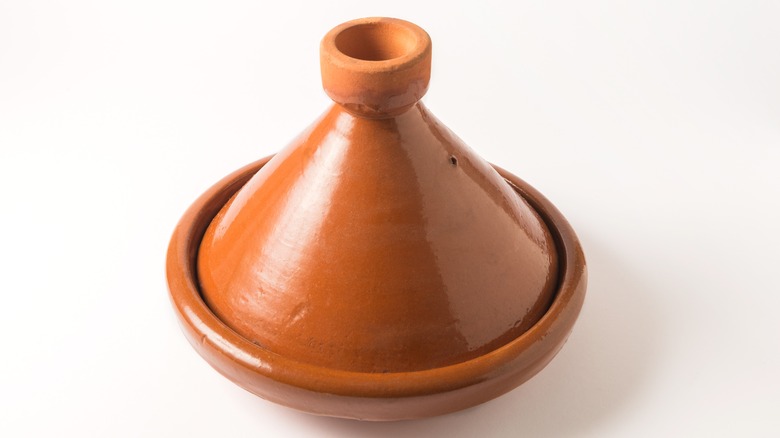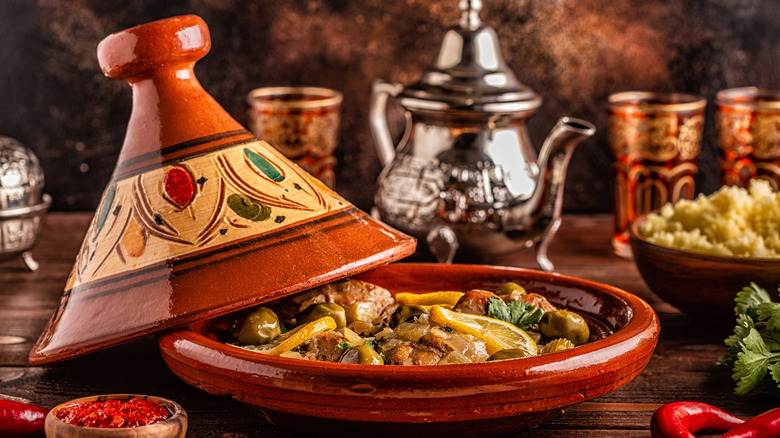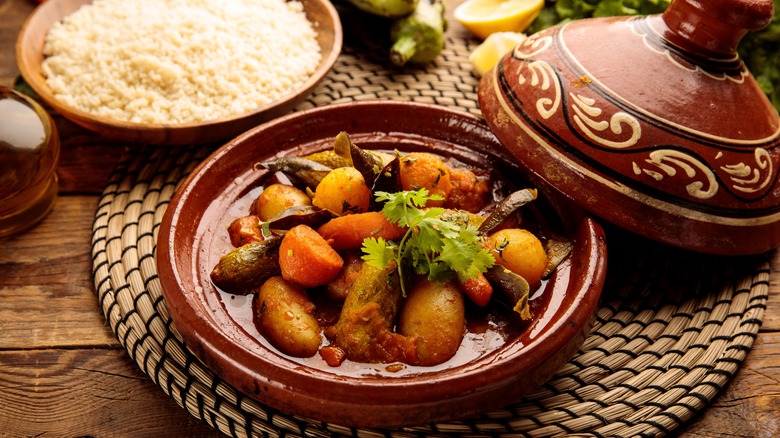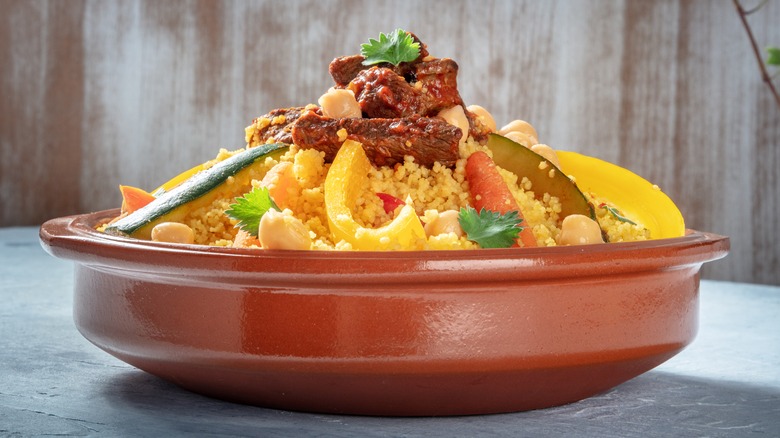The Cookware That Produces Perfect Slow-Steamed Meals
Few things can compare to the taste of a slow-cooked meal. Meat and vegetables become fork tender, full of unmatched flavor, and are usually juicy and cooked just right. Slow-cooked food can also have health benefits, since most recipes rely on time to build depth rather than oil or butter to add flavor. According to nutritionists, slow-cooked food can be easier to digest, as detailed by Jodie Abrahams. While you may think of slow-cooked meals being prepared in an electric slow cooker, steaming or simmering food in the oven, on the stovetop, or in other types of cookware can also create a slower-cooked, tasty meal.
Although you may be familiar with a side of steamed vegetables served up with your favorite meat, rice, or pasta dish, steaming can be used for more than just veggies. Steaming food is one of the healthiest cooking methods, as detailed by Consumer Reports, since meat cooks without added fats, like cooking oils and steamed vegetables retain more nutrients. There is one cooking vessel that combines the benefits of slow cooking and steaming, all due to its unique design and the material it's made from.
A clay cooking vessel
The cookware, known as a tagine, is made from clay or sometimes enameled cast iron, as detailed by Le Creuset. A tagine is a two-piece cookware consisting of a round bottom portion that holds the food and a cone-shaped lid that fits on top. The lid's unique shape allows steam to rise, condense, and then return to the dish, which keeps the food moist while it cooks, according to Food Network.
There are two types of clay tagines, those made from unglazed clay which are made for cooking, and more decorative types which are glazed, which are meant to serve food since the more decorative styles aren't meant to be exposed to heat, per Food Network. If you purchase the unglazed variety, you need to know how to season the cooking vessel before you use it for the first time. According to Master Class, a tagine needs to be seasoned by letting both pieces soak in water for two hours before use, then after it's soaked the appropriate amount of time, dry it off and apply olive oil to the interior of the cookware. Another important tip when cooking with one is to make sure you don't put the tagine directly on the heat source. According to Chatelaine, placing its direction on the burner can crack the vessel unless you use a round metal device known as a heat diffuser, which sits between your stove's burner and the bottom of the tagine.
Where the tagine originated and what's traditionally cooked in it
The word tagine has two meanings, one is for the clay cookware, and the other meaning refers to a type of Moroccan stew that's made in the eponymous two-piece cooking vessel, as reported by The Spruce Eats. The article further explained that it's widely believed the cookware originated in North Africa in the 18th century, although there is some evidence that the influence of ceramic cookware may have come from Romans, and according to the article, recipes cooked in the tagine style can be found in a ninth-century publication.
The other meaning of the word tagine comes from the stew that's made using a protein as well as vegetables or dried fruits, and earthy, warm spices such as cinnamon, cardamom, clove, and cumin per Food Network. As reported by Food and Wine, tagine stew recipes can be versatile and include lamb, beef, fish and seafood, chicken, and even vegetarian versions made with vegetables and topped with yogurt.
Other dishes to prepare in a tagine
Although the cooking vessel is ideal for making variations on the delectable Moroccan stew, there are several other things you can make in a tagine. As noted by Master Class, the clay vessel is perfect to make dishes like shakshuka, a dish of poached eggs in a spicy tomato sauce, and kefta mkaouara, which is a Moroccan meatball dish cooked in tomato sauce and also includes poached eggs.
If those two dishes aren't versatile enough for you, the website Brit + Co has identified 15 recipes that are perfect for making in the North African cooking vessel, including chicken and spring vegetables, and a dish made from butternut squash, sweet potatoes, and chickpeas. According to The Kitchn, the cone-shaped lid and even cooking from a clay tagine is also ideal for making dishes that are cooked through steam like rice, beans, and couscous. Since it's fairly easy to cook with and season, and delivers moist, tender meals, consider adding a tagine to your kitchen the next time you're looking for a new piece of cookware.



